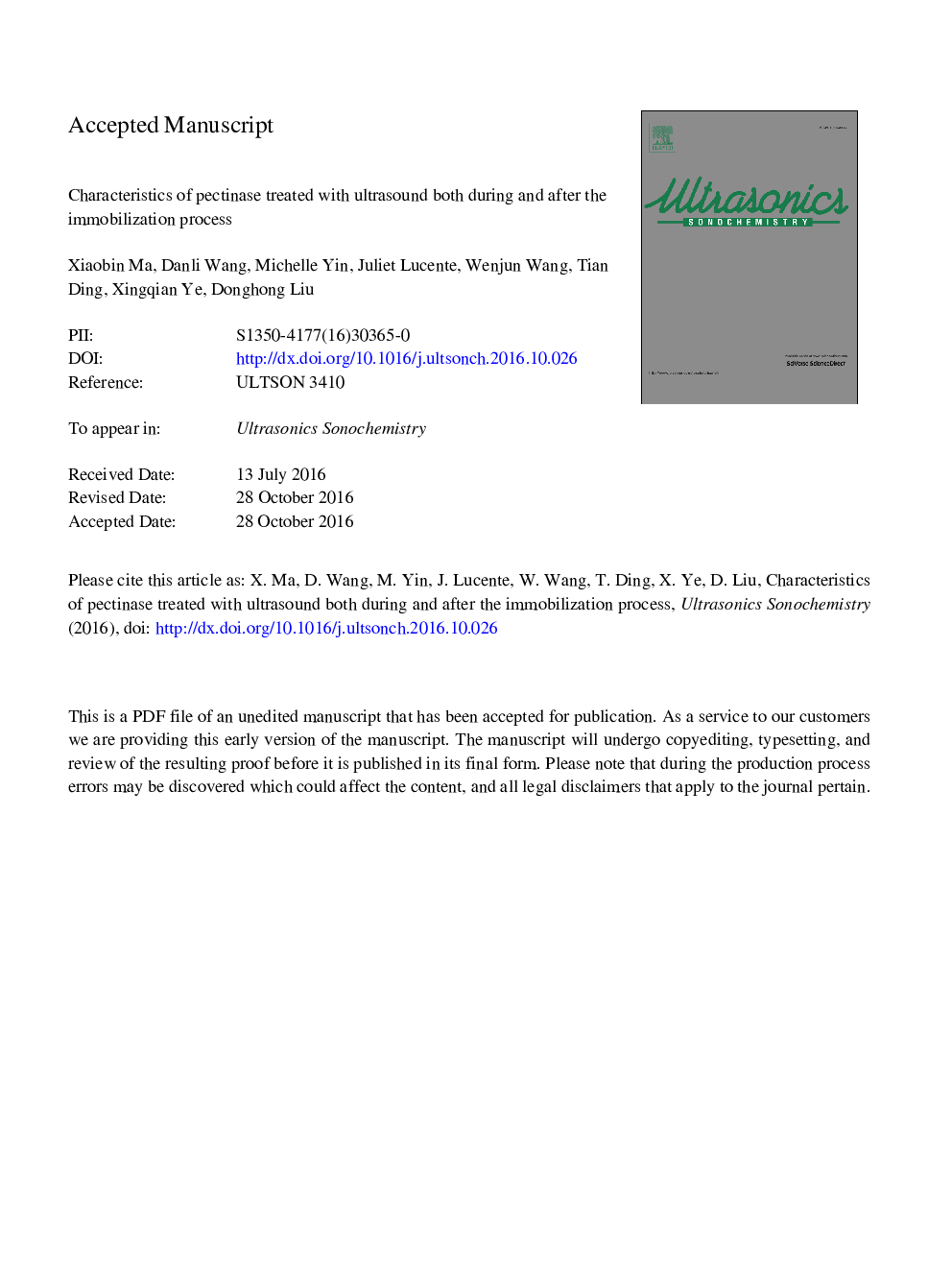| Article ID | Journal | Published Year | Pages | File Type |
|---|---|---|---|---|
| 5144714 | Ultrasonics Sonochemistry | 2017 | 41 Pages |
Abstract
In this study, ultrasound was applied both during and after the immobilization process and characteristics of different immobilized pectinase samples were studied. When introduced during the immobilization process, ultrasound at an intensity of 9 W mLâ1 for 20 min increased the immobilization yield 92.28% more than the control. When introduced to the already immobilized pectinase, ultrasound at an intensity of 4.5 W mLâ1 for 10 min increased the pectinase activity by 30.05%. Results of scanning electron microscope demonstrated that ultrasound increased surface area and loosened structures of immobilized enzymes. Higher Vmax and lower Km were obtained after ultrasound treatment, indicating the increased catalytic efficiency and enhanced affinity of immobilized pectinase. Furthermore, the optimum temperature and pH for free and immobilized pectinase remained unchanged at 50 °C and pH 4. Thermostability, reaction stability and reusability of two ultrasound-treated pectinase enzymes slightly decreased due to structural matrix changes.
Related Topics
Physical Sciences and Engineering
Chemistry
Chemistry (General)
Authors
Xiaobin Ma, Danli Wang, Michelle Yin, Juliet Lucente, Wenjun Wang, Tian Ding, Xingqian Ye, Donghong Liu,
